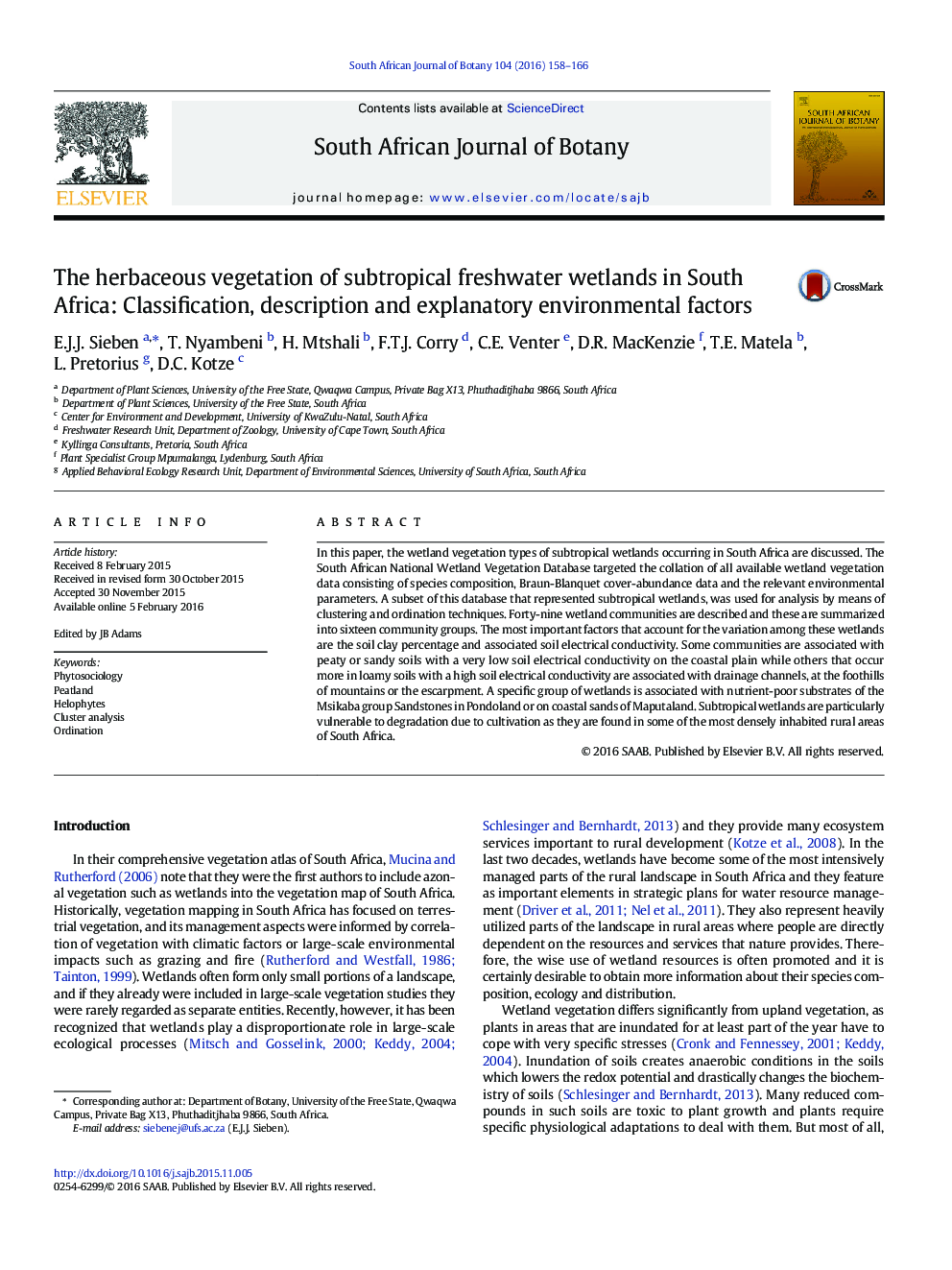| کد مقاله | کد نشریه | سال انتشار | مقاله انگلیسی | نسخه تمام متن |
|---|---|---|---|---|
| 4520243 | 1625154 | 2016 | 9 صفحه PDF | دانلود رایگان |
• A database of wetland vegetation plots for South Africa has been constructed on the basis of existing data as well as newly collected data.
• Inland saline wetlands, represented by 1112 plots, have been pulled out of the national database.
• Cluster analysis led to 49 communities which have been summarized into 16 community groups.
• Canonical ordination reveals that the main environmental gradient within these wetlands is made by the contrast between sandy and clayey soils.
• The wetlands of Pondoland and Maputaland are probably unique for South Africa and deserve priority in conservation efforts.
In this paper, the wetland vegetation types of subtropical wetlands occurring in South Africa are discussed. The South African National Wetland Vegetation Database targeted the collation of all available wetland vegetation data consisting of species composition, Braun-Blanquet cover-abundance data and the relevant environmental parameters. A subset of this database that represented subtropical wetlands, was used for analysis by means of clustering and ordination techniques. Forty-nine wetland communities are described and these are summarized into sixteen community groups. The most important factors that account for the variation among these wetlands are the soil clay percentage and associated soil electrical conductivity. Some communities are associated with peaty or sandy soils with a very low soil electrical conductivity on the coastal plain while others that occur more in loamy soils with a high soil electrical conductivity are associated with drainage channels, at the foothills of mountains or the escarpment. A specific group of wetlands is associated with nutrient-poor substrates of the Msikaba group Sandstones in Pondoland or on coastal sands of Maputaland. Subtropical wetlands are particularly vulnerable to degradation due to cultivation as they are found in some of the most densely inhabited rural areas of South Africa.
Journal: South African Journal of Botany - Volume 104, May 2016, Pages 158–166
